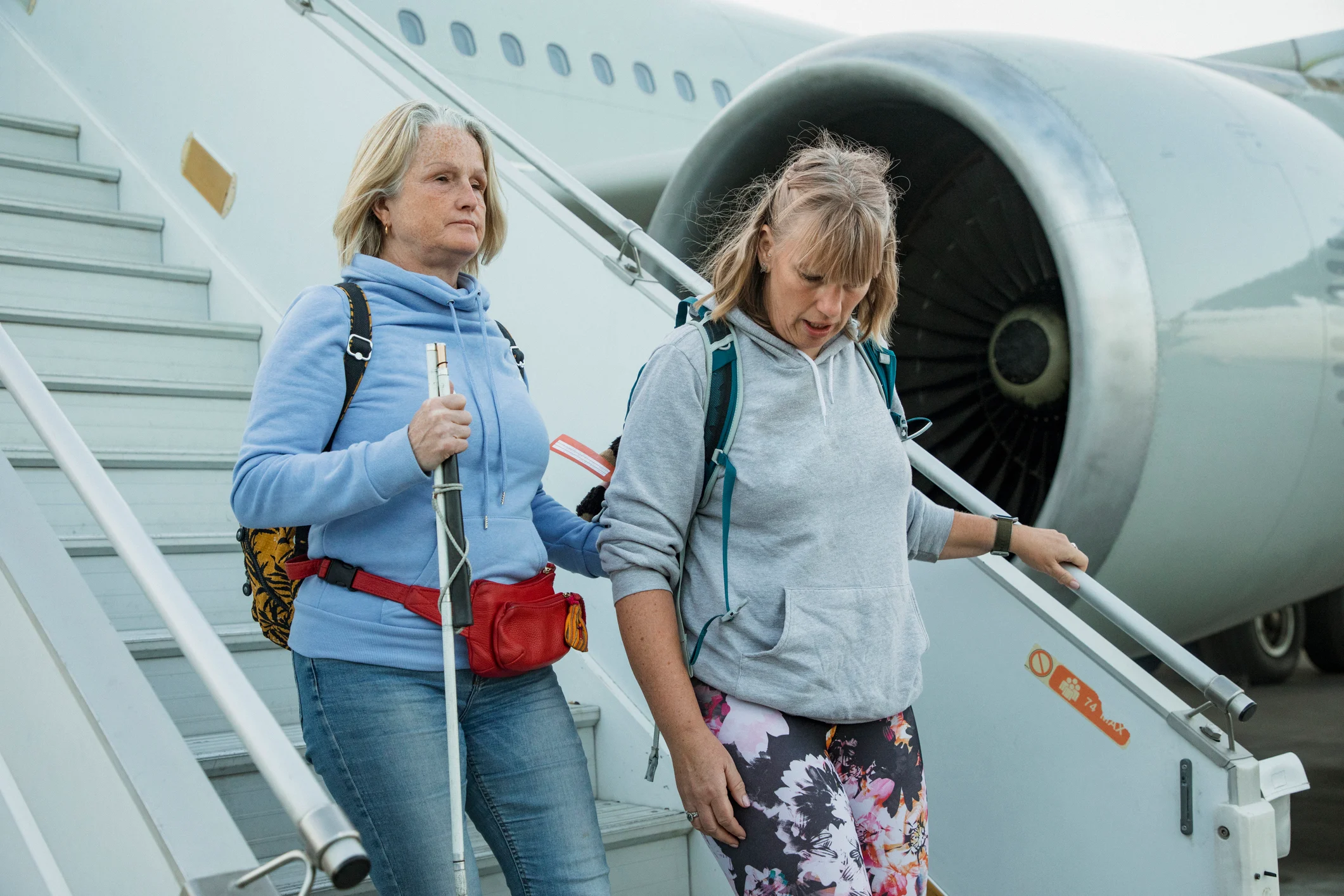Embarking on a journey can be both exhilarating and daunting for caregivers of individuals with special needs. Whether it’s conquering the labyrinthine hallways of an airport or ensuring your loved one’s comfort during a long-haul flight, the complexities of air travel can seem overwhelming. Step into our guide, meticulously crafted to empower caregivers with insider tips, practical strategies, and resources. Prepare to navigate airport terminals with ease, ensuring a smooth and stress-free adventure for both you and your extraordinary companion. Let us be your trusted guide as we unravel the intricacies of navigating airports with passengers with special needs.
– Navigating Security with Ease
Navigating Security with Ease
Traveling through airports can be stressful for anyone, but it can be especially challenging for caregivers of passengers with special needs. It’s important to plan ahead and know what to expect. You shoudl apply for a TSA PreCheck or Global Entry to bypass long security lines. Communicate your passenger’s needs clearly to the Transportation Security Administration (TSA) officer. They may have special procedures for screening passengers with disabilities. If your passenger has difficulty standing, you can request a wheelchair. You can also ask for private screening if your passenger needs it. You might want to bring a spare set of supplies, such as medications and snacks, in your carry-on luggage in case your checked bags get delayed or lost. Keep in mind you should arrive at the airport at least two hours before your flight. Make sure to have your passenger’s identification and boarding pass ready. With planning and patience, you can definitely help your passenger navigate airport security with ease.
– Accommodations for Physical Disabilities
Accommodations for Physical Disabilities
Many airports offer accommodations for passengers with physical disabilities, including:
- Accessible Check-In: Dedicated check-in lines and counters for passengers with reduced mobility.
- Mobility Assistance: Airport staff can assist with mobility aids such as wheelchairs,electric scooters,and lift services.
- Accessible Boarding: Wide-aisle planes, ramps, and lifts to facilitate boarding for passengers with mobility challenges.
- Accessible Lavatories: Restrooms designed with wider doorways, grab bars, and accessible stalls.
- Service Animals: Trained service animals are permitted in passenger cabins.
Tips:
- Contact the airline in advance to inquire about specific accommodations and request assistance.
- Arrive at the airport early to allow sufficient time for assistance and security checks.
- Bring a medical letter or documentation if you require special assistance.
- Consider bringing your own mobility aid if possible.
– Addressing Communication Challenges
Addressing Communication Challenges
For passengers with speech or hearing impairments, communication in airports can be a hurdle. Prior to arrival, connect with the airport to request services such as written instructions, sign language interpreters, or assistive listening devices. Ensure assistive devices are charged and have extra batteries. During check-in, clearly indicate any communication needs to the airline staff. Consider using communication cards or apps to facilitate interactions. When boarding or disembarking, let the crew know about any communication difficulties to ensure proper assistance.
– Mental Health Considerations When Traveling
Mental Health Considerations When Traveling
traveling can be notably challenging for individuals with mental health conditions, especially at airports.
Consider the following strategies to address their needs:
Communicate clearly and frequently: Keep them informed of changes in plans and provide reassurance about their safety.
Provide a calm and structured environment: Create a designated “safe space” where they can retreat if overwhelmed.
Limit crowds and noise: Plan itineraries during off-peak hours or secure accommodations at quieter locations.
Consider sensory needs: Bring noise-canceling headphones, weighted blankets, or fidget toys to help manage stress and anxiety.
Ensure adequate sleep: Prioritize rest by planning travel times to allow for ample sleep.
Carry a crisis plan: Provide them with written instructions on what to do if they experience a mental health emergency.
* Seek professional help: If needed, consider scheduling an evaluation with a mental health professional before travel to discuss coping mechanisms.
Closing Remarks
And just like that,you’ve reached the end of our guide to navigating airports with passengers with special needs. Remember, the key is to plan ahead, be patient, and reach out for help when you need it. You’ve got this! Whether you’re embarking on a new adventure or revisiting a cherished destination, may your travels be filled with ease and grace.

